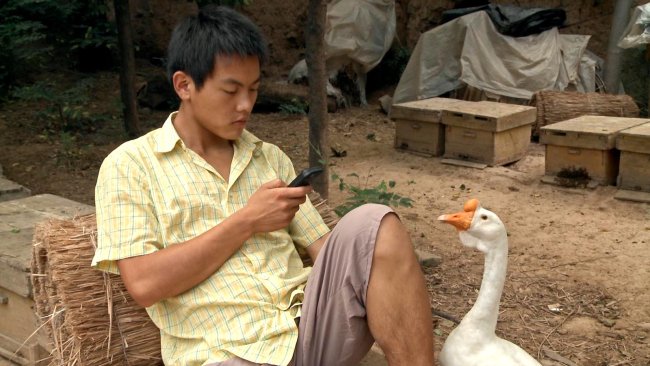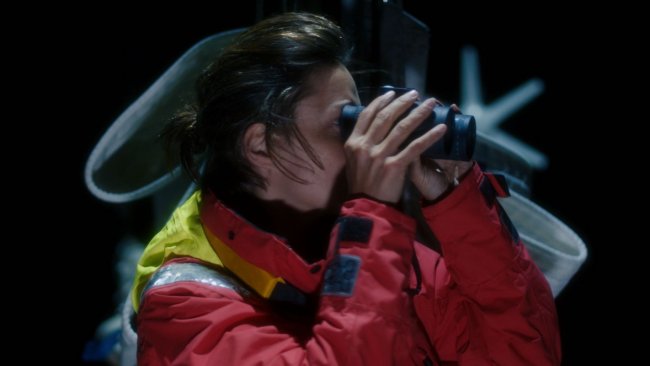Bêka and Lemoine | Homo Urbanus
[…] They thus allow us to consider architecture as sometimes obstacle, element of resistance against the social flow of urbanity. In this dysfunctional way, architecture is granted a new visibility and a potential for transformation.
[…] There is a “rigour of the surface” in «Homo Urbanus», which I read as a homage to the reality of public spaces, without the meaningful manipulations of history or knowledge.
Text: Giuseppe Di Salvatore
Bêka and Lemoine: Tensed Architecture
51 photos welcome the visitors of the Schweizerisches Architekturmuseum Basel: impressions of a contemporary Grand Tour around the world. During the 18th century, the object of the Grand Tour was classical art – be it in museums or landscapes of ruins; now people are constantly placed at the centre. Homo Urbanus is the title of the exhibition: anthropology and urban architecture are its ingredients, with the “salty” and original recipe according to which we cannot disentangle them. In the vision that Ila Bêka and Louise Lemoine express, not only is architecture not imaginable without the human being at its core but the human being is also not just an ideal Modulor, and is rather the actual ensemble of men and women constantly interacting with their urban environment. Not design, but movements and behaviours are the focus of the Italian-French duo of “architectural artists” – as they are currently called. Contrary to a certain documentary practice, the human being is treated as neither ruin nor landscape. It is then natural that the third fundamental ingredient, beside the human being and urban architecture, is nothing but the medium of film. Bêka and Lemoine’s Homo Urbanus project – and exhibition – is an avalanche of moving images, through ten urban legs, that are distributed throughout the four rooms of the Basel museum.
people behaviour as mobile infrastructure
The first scene I happen to experience shows ocean waves and people on the beach in Rabat. Where is the architecture? Yes, an urbanised beach without specific infrastructure can well be considered as a part of urban architecture, for the people themselves become a sort of mobile infrastructure, their behaviour both reacting to and designing the space. After watching several scenes of different films, it is clear to me that Bêka and Lemoine’s interest is less how architecture influences and is conceived for the people and more to study how people cope with architecture, sometimes suggesting its own transformation. Not without a good deal of humour, they (literally) give room to the accidents that occur between people and architecture – such as the delightful “story of an orange” on the most famous crosswalk in Tokyo. They thus allow us to consider architecture as sometimes obstacle, element of resistance against the social flow of urbanity. In this dysfunctional way, architecture is granted a new visibility and a potential for transformation.
a touching-base approach
I want to stress this particular experience in watching the films, because at first glance we could feel deceived by Bêka and Lemoine’s purely observational, analytical approach. We miss the prospective, project-based and future-oriented typical feature of architecture. We actually miss it and enjoy it at the same time I would say, because this touching-base approach can equally cause us to shed the abstract humanism of certain visionary architecture. Wouldn’t it be more visionary to carefully look at reality, at how people actually live architecture, than to sketch an ambitious proclamation for humankind? This open question appears to me difficult as well as inspiring and leads to another question: how carefully do these films look at people? How effective is the transformational (or learning) potential of these observational films?
the rigour of the surface
Bêka and Lemoine’s choice of the images proceeds through themes: peculiar habits or specific urban phenomena that are almost always able to make us go wow (is this a criterion for their choice of the images?). But their editing of the images lets the variety of themes prevail upon any eventual deepening. Is it because of their attempt to avoid any form of explanation or judgement? They seem to flit from flower to flower however, somehow reproducing the exotic pleasure for the picturesque. While asking myself whether they revive folklore with their films, this question is immediately surpassed by a resounding “well so what?”. Yes, there is the predatory (and colonial) exotism of tourism, but also the learning (and welcoming) exotism of curiosity – to return once more, to the 18th century and to one of its central lessons. Bêka and Lemoine’s films clearly trigger our curiosity, which is then up to us to turn into a learning process. There is a “rigour of the surface” in Homo Urbanus, which I read as a homage to the reality of public spaces, without the meaningful manipulations of history or knowledge – and their choice of the cities seems to also underline the importance of a lively public space. In order to understand the relationship between people and architecture, should the perspective of history and knowledge sometime give room to what the surface of the public space can teach us? Here is another difficult but once again inspiring question, which makes us query the concrete meaning of “understanding” the public space.
action, not explanation
To this respect, I cannot help but come back to the filmic understanding that makes the specificity of Bêka and Lemoine’s approach. In other filmic projects, such as the last wonderful Tokyo Ride (2020) that is both about and with the architect Ryue Nishizawa, the formal choices (for example the black and white or the travelling in the car in Tokyo Ride) convey the meditated intentions of the filmmakers; they are tools used to communicate ideas, concepts. On the contrary in Homo Urbanus the camera seems to give up its privileged position in the hands and the control of the filmmakers, and to fit perfectly to the surface of the urban space. Not only the architecture but also the film is shaped by the behaviour of people. In this way, the medium of film is not directly in dialogue with architecture – contrary to in Heinz Emigholz’ films, just to take a paradigmatic example of film making architecture through architecture – but works as a sounding board of people’s actions with (or despite) architecture.
within the context of architecture
This is the reason I think that it would not make sense to line up the ten films of Homo Urbanus together with current anthropological documentaries, or with films about urban architecture, but that they should be considered as expressions of urban architecture itself. Their place is not the cinema theatre but architecture spaces (like the Basel museum) and, who knows, architecture itself. Within the context of architecture and architectural discourse, we can measure the high originality of their being films, and being films echoing human actions and behaviours on the surface of public spaces. They sketch something that I can describe only as creating an unprecedented expression – which proves the originality of their proposal (an observational proposal, yes, but a proposal nonetheless!): tensed architecture. Tensed architecture, or architecture as a verb, a verb created by human action and behaviour, which we can see through films that take said action and behaviour as a main orientation, but without superposing meaning, intention or explanation.
I leave the Schweizerisches Architekturmuseum Basel with this pleasant intuition of “tensed architecture”, and to myself I say: they’re still visionary architects, Ila Bêka and Louise Lemoine…
Info
Homo Urbanus – A Cinematographic Odyssey | Exhibition | Ila Bêka, Louise Lemoine | Schweizerisches Architekturmuseum Basel | 1/4-27/8/2023
First published: June 24, 2023









